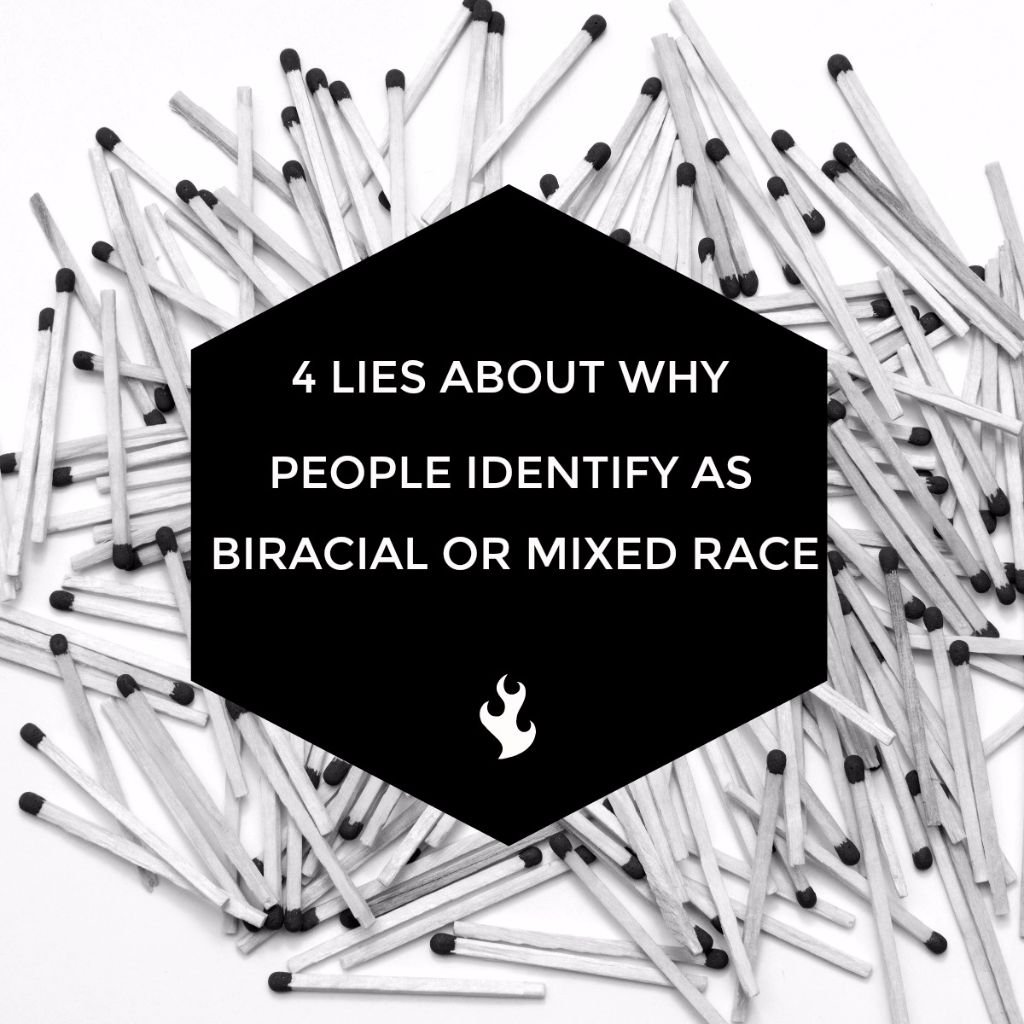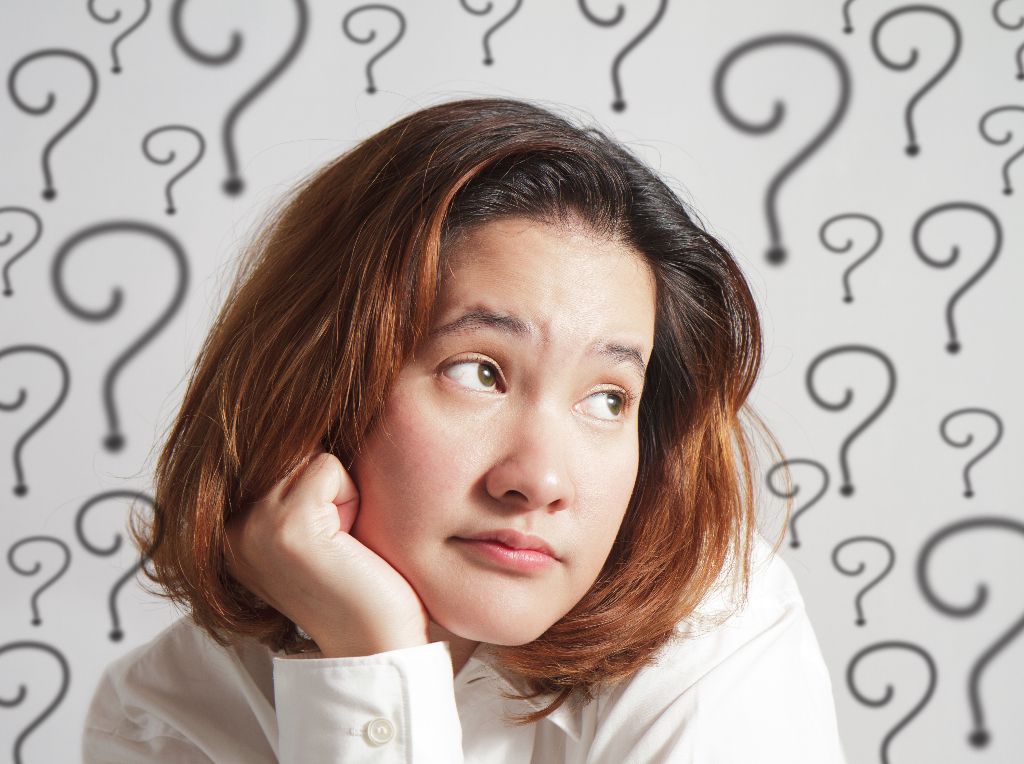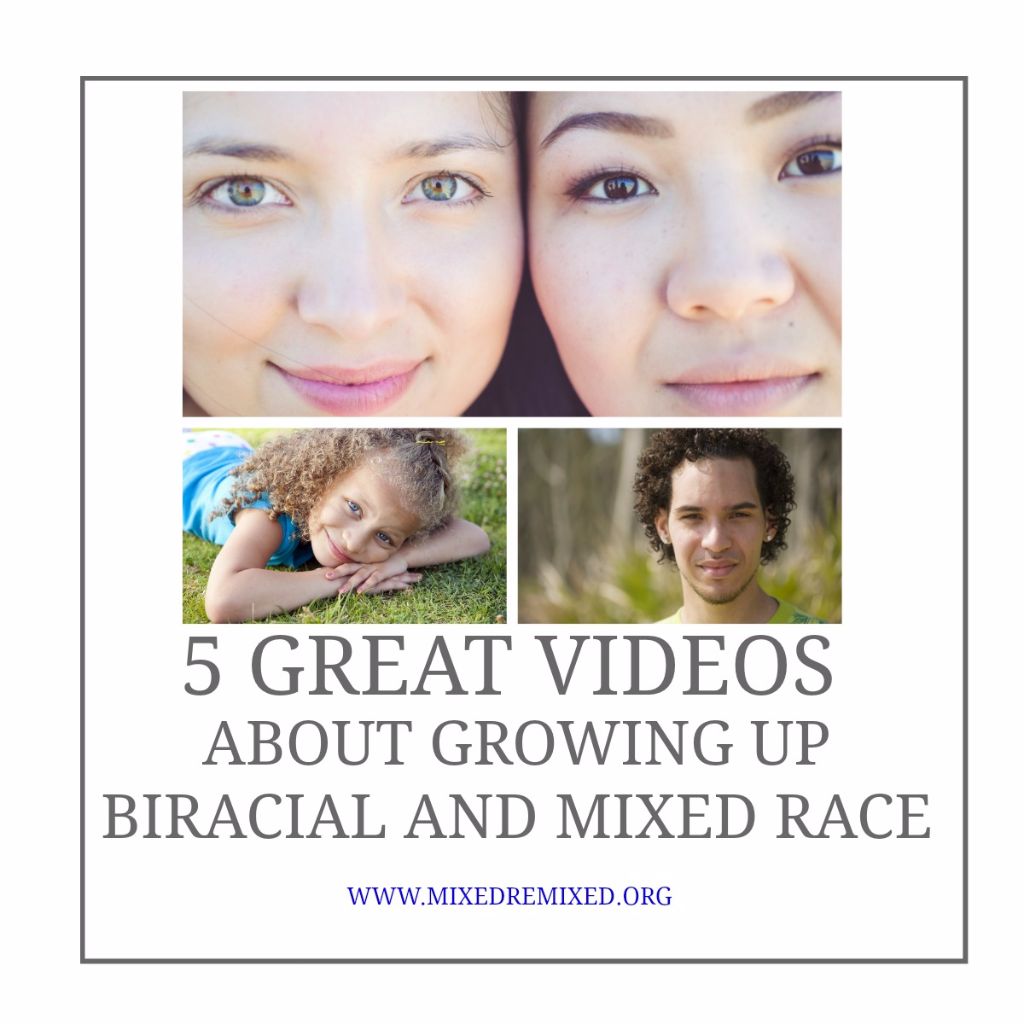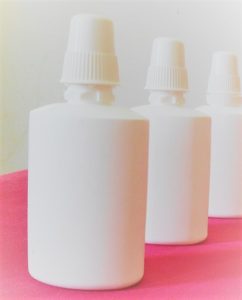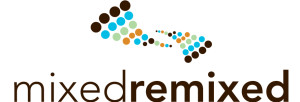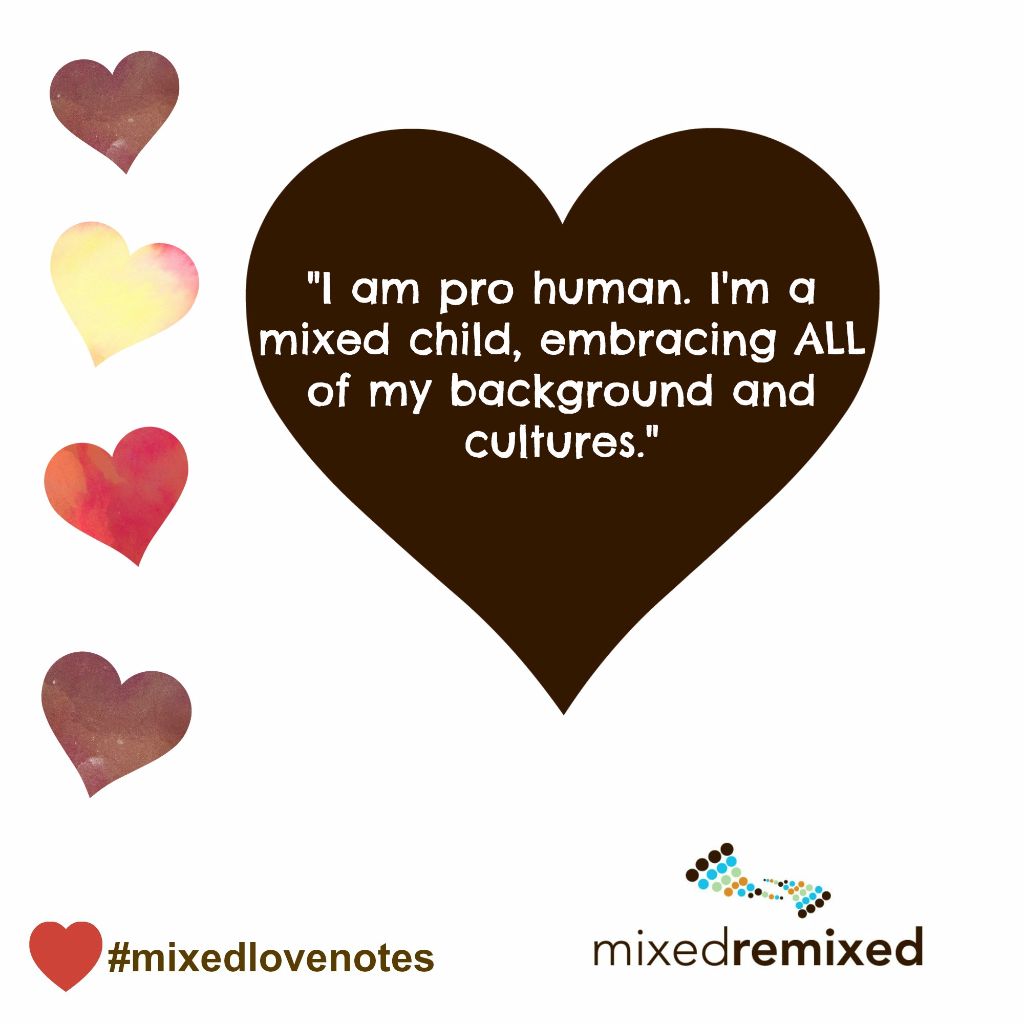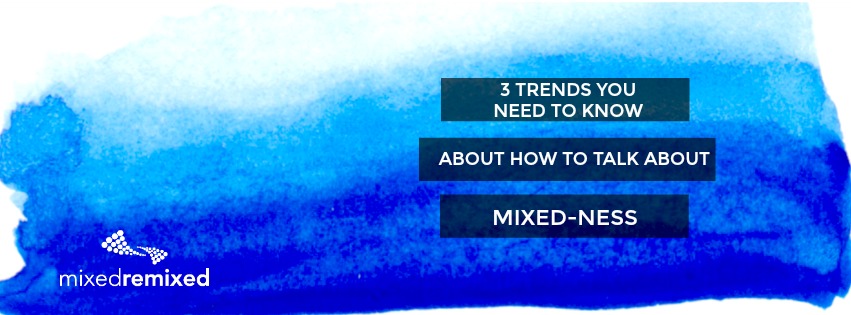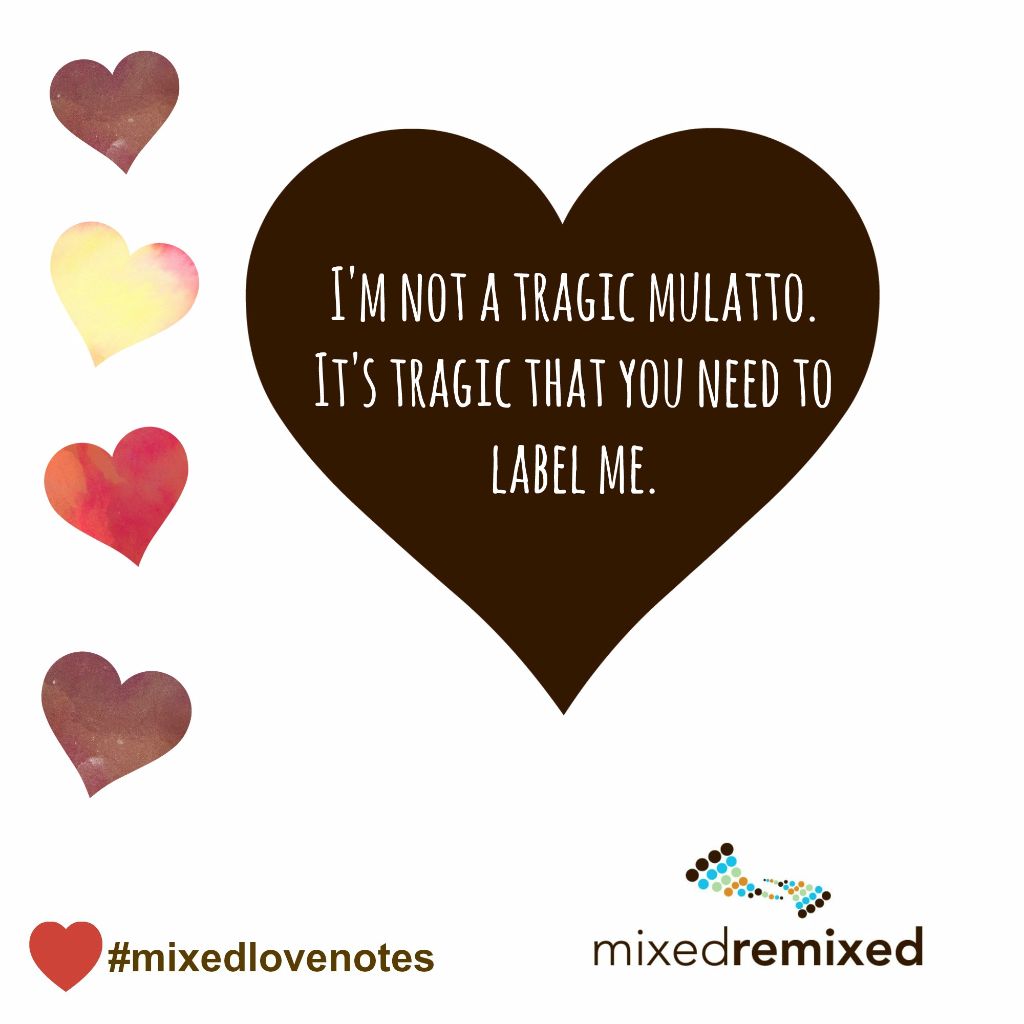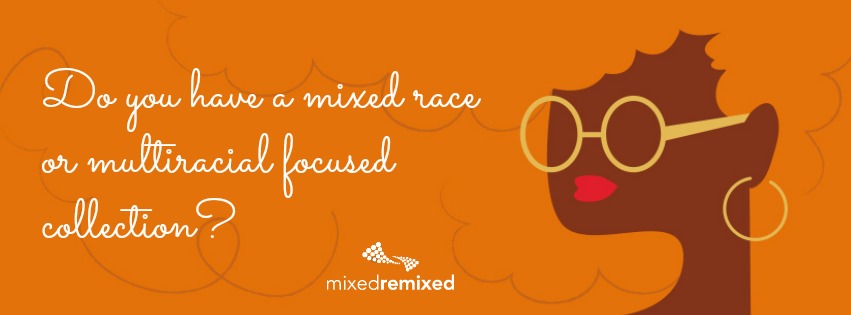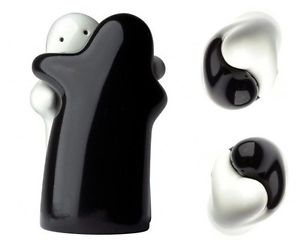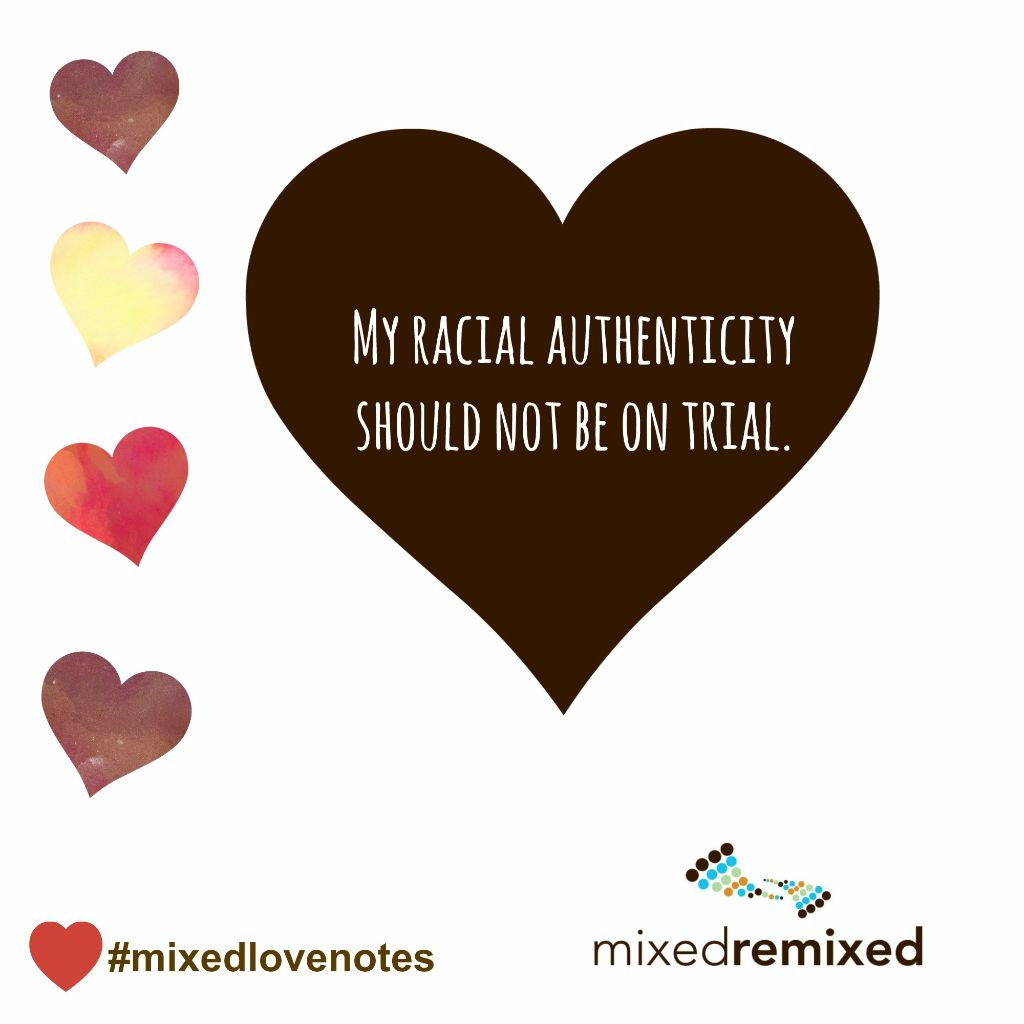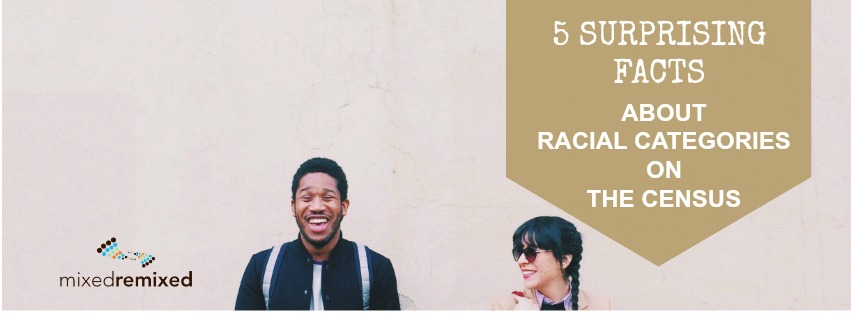5 Things That Will Make You Feel Like You Can Embrace a Mixed Race or Biracial Identity
1. Recognize that your psychic health may require self-acceptance of your mixed race and multiracial identity.
A study published in 2015 in Current Directions in Psychological Science by Sarah Gaither found that multiracial children who are “raised to identify with both parents and to understand their complex racial heritage [can] have higher self-esteem than mono-racial people. They are adaptable, able to function well in both majority and minority environments. They are more likely to reject the conception that race biologically predicts one’s abilities, which may, in turn, insulate them from the negative impact of racism or bias.” Source: New York Magazine.
2. Learn about historical figures who were mixed.
 One of the things that helped me start to accept the fact that I could not hide from my complicated cultural and racial identity was learning about other mixed-race people of the past. For me, Nella Larsen who also wrote about being black and Danish (like me) back in the 1920s became an important figure. I saw her bravery about talking about being mixed in a racially divided world as a kind of permission. It’s important to feel like you have a history. Seek out mixed historical figures. Here’s one fun resource in The Mixed Experience History Month.
One of the things that helped me start to accept the fact that I could not hide from my complicated cultural and racial identity was learning about other mixed-race people of the past. For me, Nella Larsen who also wrote about being black and Danish (like me) back in the 1920s became an important figure. I saw her bravery about talking about being mixed in a racially divided world as a kind of permission. It’s important to feel like you have a history. Seek out mixed historical figures. Here’s one fun resource in The Mixed Experience History Month.3. Read books about biracial people (fiction and non-fiction).
 There is an ever-growing literature about biracial and mixed-race characters and people. Read those stories and find yourself! We have a couple of resources here if you’re looking for memoirs or kids’ books. The Mixed Remixed Festival also has its own on-line book club. You should join us and read some great books!
There is an ever-growing literature about biracial and mixed-race characters and people. Read those stories and find yourself! We have a couple of resources here if you’re looking for memoirs or kids’ books. The Mixed Remixed Festival also has its own on-line book club. You should join us and read some great books!4. Watch films featuring biracial and mixed race characters.
 Ditto films! It’s an amazing experience to be in a theater and see families that look like your own like the wonderful film, Loving, and now more recently A United Kingdom. Heck, you can find our stories on Netflix too. Stream one now!
Ditto films! It’s an amazing experience to be in a theater and see families that look like your own like the wonderful film, Loving, and now more recently A United Kingdom. Heck, you can find our stories on Netflix too. Stream one now! 5. Connect on-line and in-person with other mixed race and biracial people.
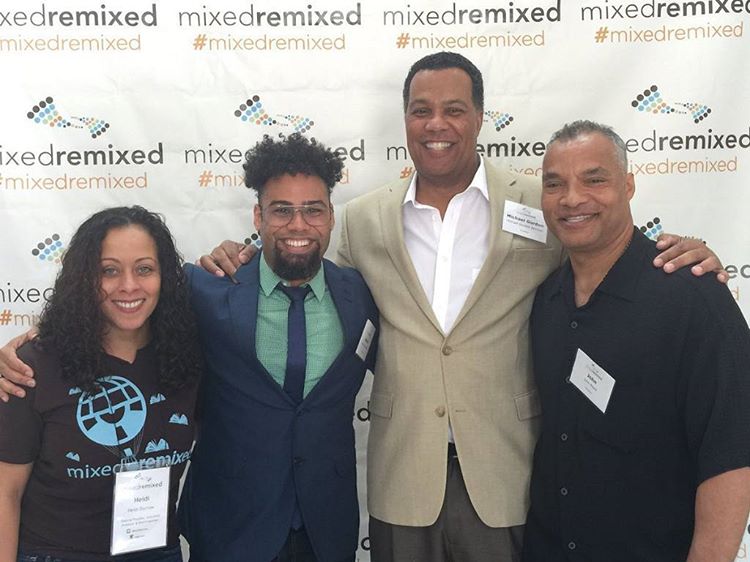 It’s been so amazing to connect with other mixed folks and families on line in various Facebook groups and on Twitter and Instagram. Our favorite way to connect though is the Mixed Remixed Festival. It’s the largest nationwide gathering of mixed families and people held each year in June. You should join us! It’s free!
It’s been so amazing to connect with other mixed folks and families on line in various Facebook groups and on Twitter and Instagram. Our favorite way to connect though is the Mixed Remixed Festival. It’s the largest nationwide gathering of mixed families and people held each year in June. You should join us! It’s free! 5 Great Videos About Growing Up Biracial and Mixed Race
1. The Struggles of Being Mixed Race via Buzzfeed Yellow
This video has been incredibly popular. It has its fans (because it tells hard truths) and detractors (because, well, you tell us). What do you think?
2. Mixed Kid Problems: Growing Up Multicultural via Liza Koshy
Liza is fun and funny. We know that you will agree!
3. Being Multiracial in America via New York Times
This video is almost 10 years old now! But you’ll be surprised at how much the conversation has stayed the same.
4. What’s So Funny About Being Mixed? via Mixed Remixed Festival
This will make you laugh and remind you that no, we are not tragic mulattos. Mixed folks got jokes too.
5. What Are You? via Mixed Remixed Festival
This great video features Festival favorites Keegan-Michael Key and Jordan Peele as well as the cute as a button Cheerios girl!
3 Clever Tools to Simplify Your Curly Hair Days
3 Clever Tools to Simplify Your Curly Hair Days
Some days I wonder why people use the term “naturally curly” when talking about my hair. I have been in a life-long search to figure out how to make my naturally curly hair look curly. These are some of the tools that have helped me on my curly hair days.
1. Mixed Chicks Hair Products
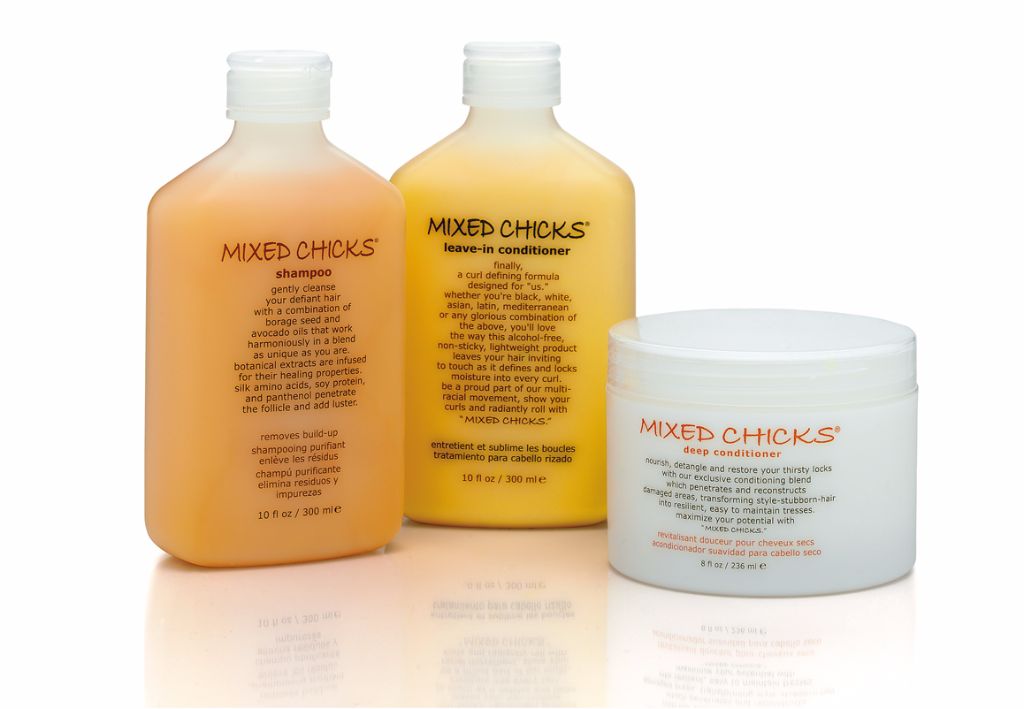 Mixed Chicks Hair Products have worked wonders on my hair. The products define my curls without weighing them down. And the product doesn’t flake off like other products can. My favorite product is the leave-in conditioner, but check out the whole line of shampoos, conditioners, and now hair brushes and hair accessories too!
Mixed Chicks Hair Products have worked wonders on my hair. The products define my curls without weighing them down. And the product doesn’t flake off like other products can. My favorite product is the leave-in conditioner, but check out the whole line of shampoos, conditioners, and now hair brushes and hair accessories too!2. Fast-drying hair towel
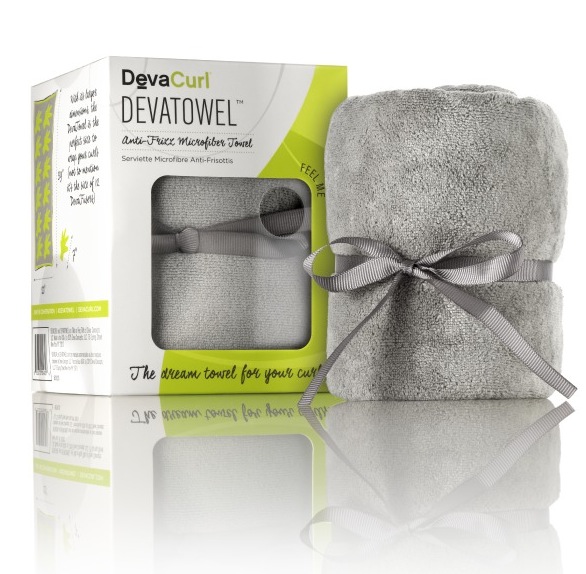 If you have long, thick curly hair, a fast-drying hair towel is a real life saver. In the past, my hair has been damp up to five hours after I’ve washed it. And maybe you too have experienced that ring around the shoulders of a tshirt when your hair was still wet? Your curls will dry happily in a fast-drying hair towel without getting smushed. Try it.
If you have long, thick curly hair, a fast-drying hair towel is a real life saver. In the past, my hair has been damp up to five hours after I’ve washed it. And maybe you too have experienced that ring around the shoulders of a tshirt when your hair was still wet? Your curls will dry happily in a fast-drying hair towel without getting smushed. Try it.
3. Lavender Water in Spray Bottle
Join us for the largest gathering of multiracial and mixed-race families and people in June 2017 for the 4th Annual Mixed Remixed Festival.
Mixed Love Notes: I’m pro human . . . I’m a mixed child . . .
Want more #mixedlovenotes? Sign up and get it in your inbox every day for the month of February!
Sign up here to get your daily #mixedlovenotes!
Join us for the largest gathering of multiracial and mixed-race families and people in June 2017 for the 4th Annual Mixed Remixed Festival.
3 Trends You Need to Know About How to Talk About Mixed-ness, Mixed Race and Multiracial Experience and Identity
Sometimes it feels like the needle is not moving fast enough on the conversation about mixed-race and multiracial identity and experience. But if we take a moment to take a look at the conversations that we’re having today, there are some changes happening in the way that people are talking. Here are 3 trends you should know about if you’re talking about mixed-ness these days:
Intersectionality
Legal scholar Kimberle Crenshaw provides a very good explanation of what intersectionality is about in this essay. (See also her 2016 TED Talk.) She’s not writing about mixed-race issues in particular but the ideas still apply.
“Intersectionality is an analytic sensibility, a way of thinking about identity and its relationship to power. Originally articulated on behalf of black women, the term broug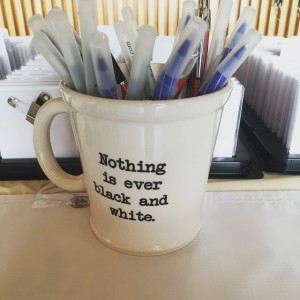 ht to light the invisibility of many constituents within groups that claim them as members, but often fail to represent them. Intersectional erasures are not exclusive to black women. People of color within LGBTQ movements; girls of color in the fight against the school-to-prison pipeline; women within immigration movements; trans women within feminist movements; and people with disabilities fighting police abuse — all face vulnerabilities that reflect the intersections of racism, sexism, class oppression, transphobia, able-ism and more. Intersectionality has given many advocates a way to frame their circumstances and to fight for their visibility and inclusion.” Kimberle Crenshaw
ht to light the invisibility of many constituents within groups that claim them as members, but often fail to represent them. Intersectional erasures are not exclusive to black women. People of color within LGBTQ movements; girls of color in the fight against the school-to-prison pipeline; women within immigration movements; trans women within feminist movements; and people with disabilities fighting police abuse — all face vulnerabilities that reflect the intersections of racism, sexism, class oppression, transphobia, able-ism and more. Intersectionality has given many advocates a way to frame their circumstances and to fight for their visibility and inclusion.” Kimberle Crenshaw
Multi-Generationally Mixed (MGM)
 More people are connecting with their mixed backgrounds. That means people who felt like they didn’t have permission before are claiming a heritage that had been denied them before. Many of those people are “multigenerationally mixed” — a kind of remix of mixing. NPR’s Leah Donella wrote a really great piece about this changing landscape and terminology for mixed-ness. You can read it here: All Mixed Up: What Do We Call People Of Multiple Backgrounds?
More people are connecting with their mixed backgrounds. That means people who felt like they didn’t have permission before are claiming a heritage that had been denied them before. Many of those people are “multigenerationally mixed” — a kind of remix of mixing. NPR’s Leah Donella wrote a really great piece about this changing landscape and terminology for mixed-ness. You can read it here: All Mixed Up: What Do We Call People Of Multiple Backgrounds?
Reclaiming the Word “Mulatto”
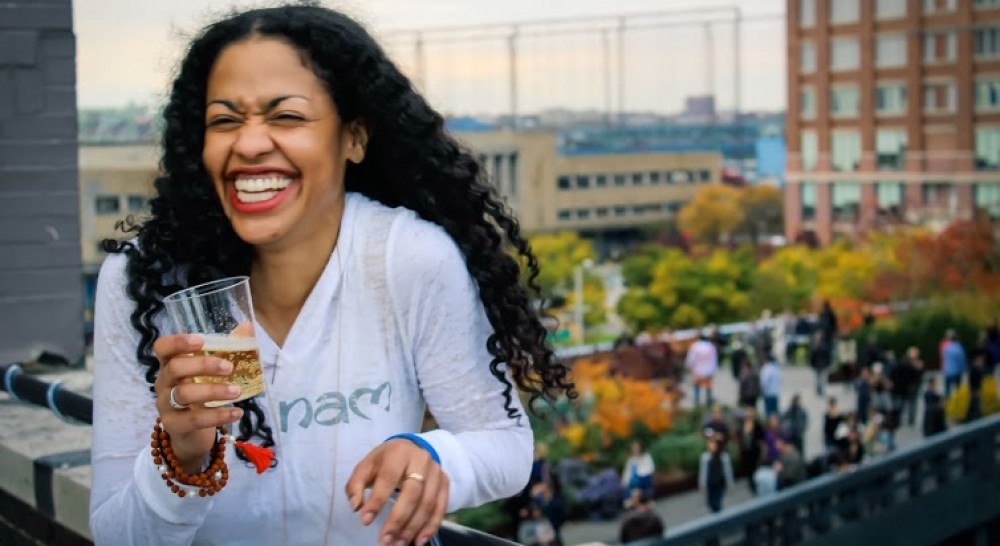 There is a lot of discussion about this word that many consider perjorative. But there are many thought leaders in the mixed race community who are eager to reclaim it in the same way that the LGBTQ movement reclaimed the word queer. I myself am sometimes one of these people when I jokingly refer to myself as a professional mulatto. You can check out the wonderful work of Tiffany Jones of the Mulatto Diaries (still relevant now a couple of years later). And definitely make sure that you read Mat Johnson’s defense of the word mulatto here: Why You Can Kiss My Mulatto Ass
There is a lot of discussion about this word that many consider perjorative. But there are many thought leaders in the mixed race community who are eager to reclaim it in the same way that the LGBTQ movement reclaimed the word queer. I myself am sometimes one of these people when I jokingly refer to myself as a professional mulatto. You can check out the wonderful work of Tiffany Jones of the Mulatto Diaries (still relevant now a couple of years later). And definitely make sure that you read Mat Johnson’s defense of the word mulatto here: Why You Can Kiss My Mulatto Ass
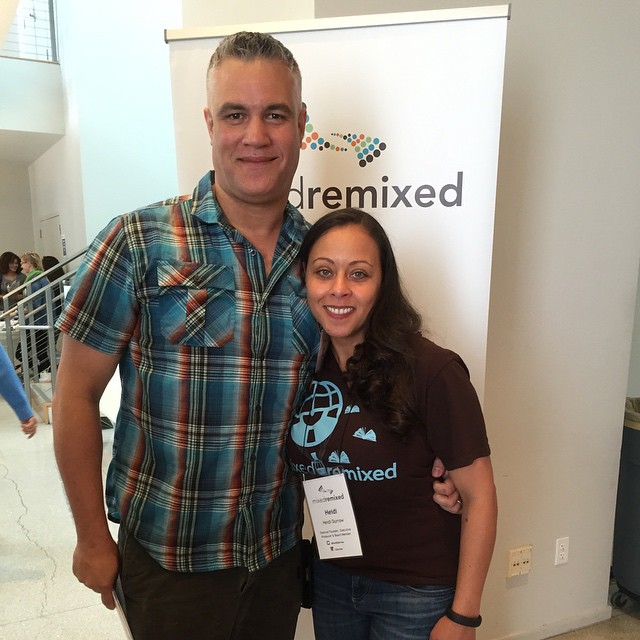 “Yo, I’m a mulatto. And I have to tell you, it’s great. I was black for most of my life, which is also great, but the thing is I look white and, coincidentally, my dad’s also white (he’s great too), and after a while I needed a word that offered me a better fit, and acknowledge my father and his whole family’s impact on my life, which was also a big part of my identity. So I converted to mulatto, which I see as a subset of the larger African American experience. I actually love the word mulatto.” – Mat Johnson
“Yo, I’m a mulatto. And I have to tell you, it’s great. I was black for most of my life, which is also great, but the thing is I look white and, coincidentally, my dad’s also white (he’s great too), and after a while I needed a word that offered me a better fit, and acknowledge my father and his whole family’s impact on my life, which was also a big part of my identity. So I converted to mulatto, which I see as a subset of the larger African American experience. I actually love the word mulatto.” – Mat Johnson
Mixed Love Notes: I’m not a tragic mulatto.
Want more #mixedlovenotes? Sign up and get it in your inbox every day for the month of February!
Sign up here to get your daily #mixedlovenotes!
Join us for the largest gathering of multiracial and mixed-race families and people in June 2017 for the 4th Annual Mixed Remixed Festival.
3 Types of Tongue-in Cheek Collections of Mixed Race and Multiracial Folks
One thing that I am constantly aware of is how can we put humor into our discussions about mixed-ness. We are not tragic after all and there is much to mine for comedy in our families and the often awkward encounters we have over race. So today, we celebrate 3 types of tongue-in-cheek collections of mixed race and multiracial folks. Do you have a collection too? Let us know!
 Pandas–Yes, of course! Pandas are black, white and Asian! Supremely mixed! I have collected a few awesome panda things myself including pajamas, usb sticks, and pencils. There is a world of great panda stuff out there if this is the collection you want to start.
Pandas–Yes, of course! Pandas are black, white and Asian! Supremely mixed! I have collected a few awesome panda things myself including pajamas, usb sticks, and pencils. There is a world of great panda stuff out there if this is the collection you want to start.
 Zebras–Again, of course! This was one of the things that my brothers and I would joke about all the time and call ourselves zebras. Again, zebras are really popular and well, terribly cute. If you have a zebra collection, do tell what your favorite find is.
Zebras–Again, of course! This was one of the things that my brothers and I would joke about all the time and call ourselves zebras. Again, zebras are really popular and well, terribly cute. If you have a zebra collection, do tell what your favorite find is.
Mixed Love Notes: My racial authenticity should not be on trial.
Want more #mixedlovenotes? Sign up and get it in your inbox every day for the month of February!
Sign up here to get your daily #mixedlovenotes!
Join us for the largest gathering of multiracial and mixed-race families and people in June 2017 for the 4th Annual Mixed Remixed Festival.
5 Surprising Facts About Racial Categories on the Census
In 2020–and it’s really right around the corner–the U.S. Census will be taken again to give us a portrait of America. Some people may not realize that the racial categories that seem so “fixed” in American discussions of race have been fluid on paper and in the government’s eyes since the beginning. Here are 5 surprising facts about racial categories on the Census and how America has “counted” race since its beginning.
- The term “Negro” will be dropped for the 2020 Census. Source: NPR “No More ‘Negro’ For Census Bureau Forms And Surveys” February 25, 2013 Tanya Ballard Brown
- Starting in 1960, Americans could choose their own race on the Census. Source: Pew Research Center “Multiracial in America Proud, Diverse and Growing in Numbers” June 11, 2015
- The 2000 Census was the first time Americans could choose more than one racial category. Source: Pew Research Center “Multiracial in America Proud, Diverse and Growing in Numbers” June 11, 2015
- The 1790 Census counted these racial categories: “Free White Males, Free White Females”; “All Other Free Persons” (by color); “Slaves”. Source: Pew Research Center Race and the Census: The “Negro” Controversy by D’Vera Cohn January 21, 2010

- In 1910, the Census used “Mu” for mulatto and “Ot” for octoroon for a data item called “color or race.” According to that year’s Census: “For census purposes, the term ‘‘black’’ (B) includes all persons who are evidently full blooded negroes, while the term ‘‘mulatto’’ (Mu) includes all other persons having some proportion or perceptible trace of negro blood.” Source: Pew Research Center Race and the Census: The “Negro” Controversy by D’Vera Cohn January 21, 2010
- 1
- 2
- 3
- 4
- Next Page »
